'Like a war zone': NZ extends state of emergency for cyclone-hit communities
By Richard Wood • Senior Journalist
An Australian woman who just returned from New Zealand has described the "apocalyptic" scenes in parts of the North Island hit by Cyclone Gabrielle.
Stella Mountain, from Sydney, was in the Hawke's Bay region of the North Island helping her Kiwi boyfriend and his relatives recover from the disaster after the cyclone hit nearly three weeks ago.
Cyclone Gabrielle left at least 11 people dead across New Zealand and destroyed or damaged homes, businesses, farms and infrastructure, including kilometres of roads.
READ MORE: State warned of worst weather conditions since 2019
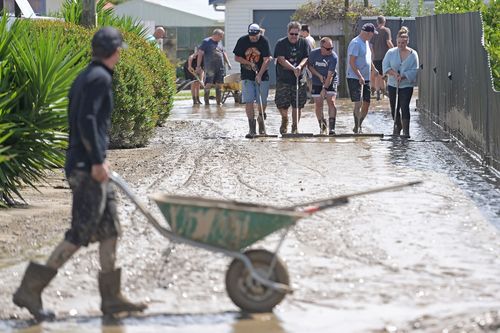
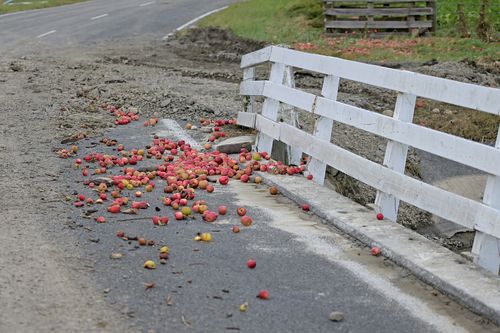
This week New Zealand extended the state of national emergency for a further seven days for the Tairāwhiti and Hawke's Bay areas.
Mountain filmed scenes of the damage as she drove in areas around the coastal city of Napier in Hawke's Bay.
Her footage showed upturned vehicles, wrecked homes and large trees uprooted
"It felt like I was driving through a war zone, they were apocalyptic scenes," she told 9News.com.au
Mountain said the region faces a long road to recovery and struck on the eve of the apple and grape harvest, a big blow for growers and wineries.
"The vineyards and orchards were covered in mud and had to be removed by hand," she said.
New Zealand authorities have launched a huge recovery operation over the past weeks aiming to rebuild vital infrastructure and restore essential services.
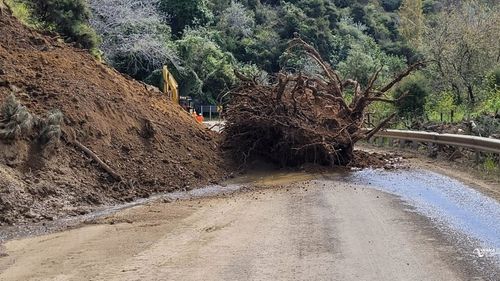
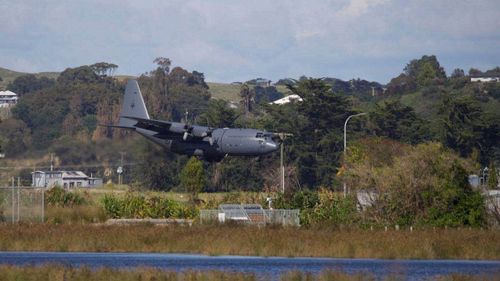
New Zealand's Minister for Emergency Management Kieran McAnulty said thousands of residents continue to be affected by the disaster.
"The impact of Cyclone Gabrielle continues to be deeply felt by many communities in the North Island," he said.
"In the the Tairāwhiti and Hawke's Bay regions, thousands of people are still unable to return to their homes due to flood damage."
The Cyclone Gabrielle disaster is the third national state of emergency after the 2011 Christchurch earthquake and COVID-19 pandemic in 2020
Cyclone Gabrielle: Size of debris dam illustrates huge infrastructure challenges ahead
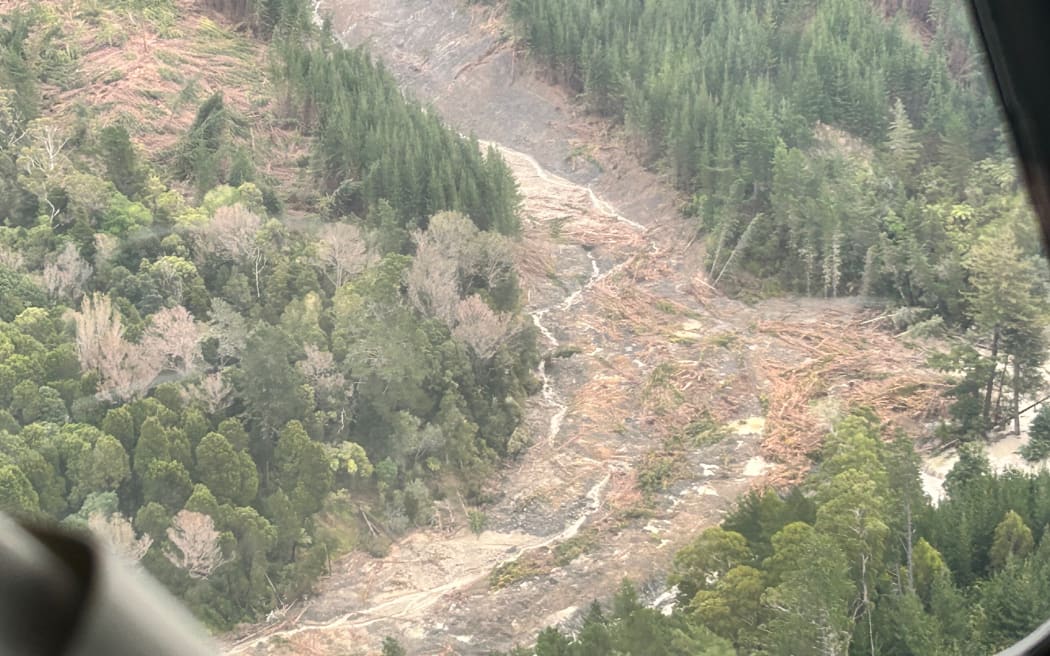
Flood damage, as seen from the sky over Tokomaru Bay around the Mangahauini River. Photo: RNZ / Ashleigh McCaull
First person - Tokomaru Bay residents got temporary clearance to return home after being evacuated on Thursday due to fears a debris dam would burst.
But their return could be short as heavy rain is forecast for Monday so locals are being advised to be ready to evacuate again.
Ashleigh McCaull was in the air and took a look at the debris dam on the Mangahauini river.
While other media and I waited for our helicopter to fly us over the Mangahauini River between Tokomaru Bay and Te Puia Springs, we saw box after box of bottled water and other supplies being stacked on one helicopter, while others - including mayor Rehette Stoltz - were flown to the small hanger at the back of Gisborne Airport after visiting the area.
It has been almost two weeks since Cyclone Gabrielle struck the East Coast and the aftermath is still heavily impacting whānau.
Officials are monitoring the river 24/7 after worries Tokomaru Bay could have become like many other areas across the North Island and turned the town itself into a muddy river.
Residents of 64 homes were evacuated from Tokomaru Bay to one of the local marae on Thursday night because of fears the debris dam upstream of the town would fail from the heavy downpours.
The road between Tokomaru Bay and Te Puia Springs is blocked by a huge slip, damming the river and creating a temporary lake.
Tairāwhiti Civil Defence estimates it holds about 400,000 cubic metres of water, silt and trees.
A massive chunk of road along the Mangahauini River is completely gone, the only vehicle that sits close to the edge is a token yellow digger.
Parts of what is left of State Highway 35, around the river catchment, appear as if they are ready to crumble at any moment.
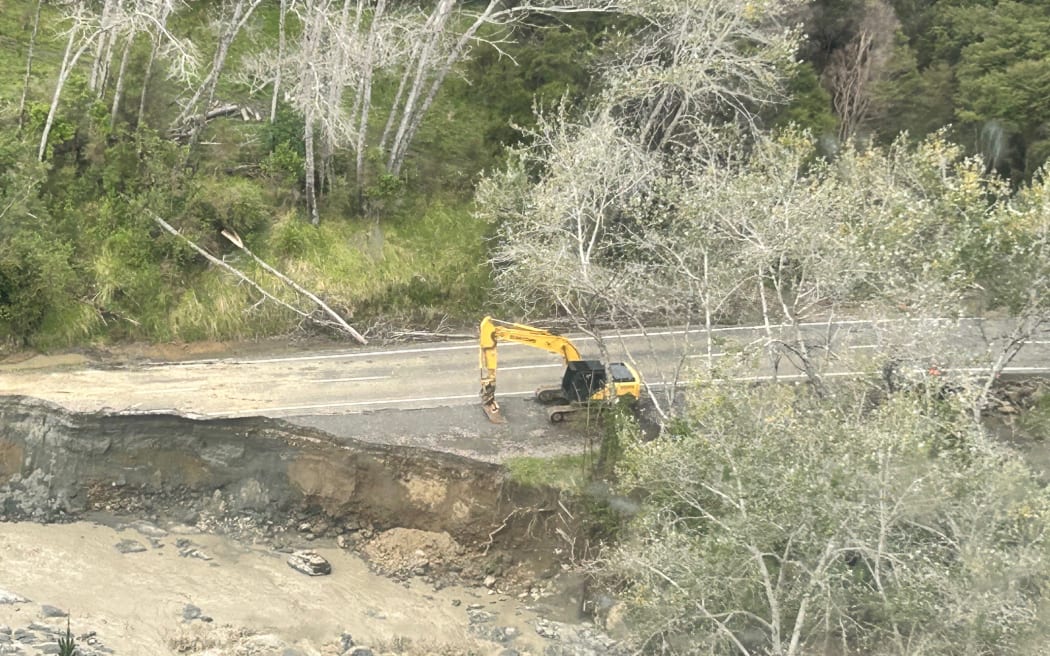
A solitary yellow digger is stationed near the edge of a washed-out road along the Mangahauini River. Photo: RNZ / Ashleigh McCaull
The Mangahauini River itself still resembles a torrent of mud overflowing onto a single slab of road that wasn't washed away.
Tairāwhiti Civil Defence Controller Ben Green said the immediate danger was over for now.
"Our key concern for Tokomaru Bay was the debris damn and actually where we are now it hasn't presented any more risk than where it was [on Friday]," Green said.
"We've had engineers and the team on the ground and with that level of comfort we've allowed people back in their houses and, equally, further work to take place in the catchment."
Yesterday a group of engineers was set to blow up the dam with explosives but after an assessment it was decided that wasn't needed as the dam didn't budge despite the heavy rain on Friday night.
Roadblocks are set up to stop access to areas of concern around the Mangahauini River catchment and Tokomaru Bay.
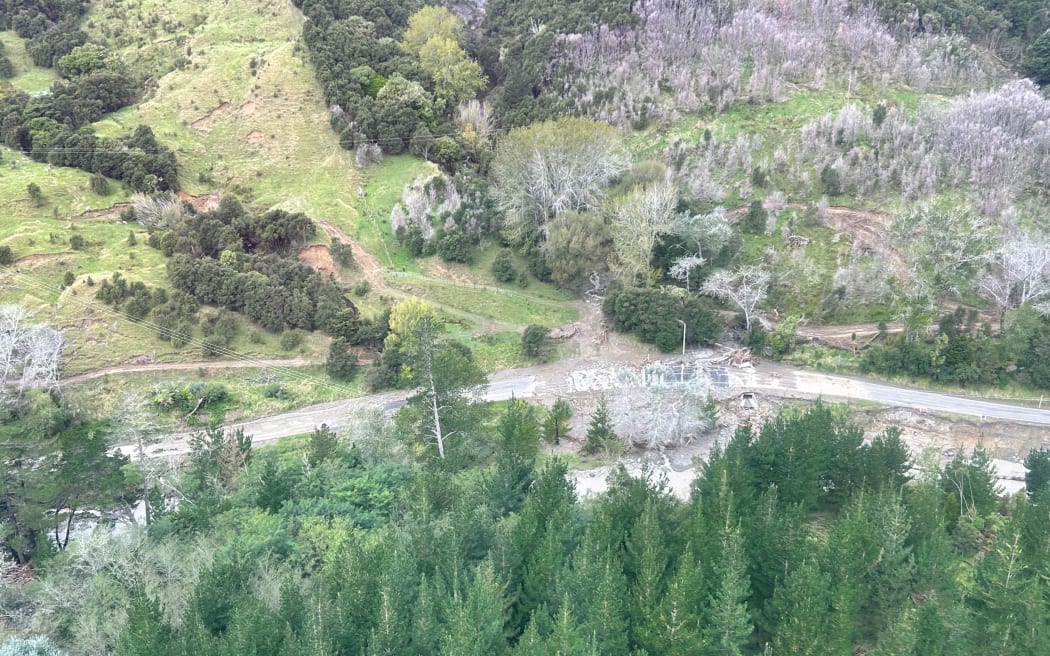
It has been almost two weeks since Cyclone Gabrielle struck the East Coast, causing extensive damage. Photo: RNZ / Ashleigh McCaull
Although there are no weather warnings currently in place, MetService is predicting heavy rain for Te Tai Rāwhiti on Monday which is not set to ease until Tuesday evening.
On a personal note, although I have never lived around the East Coast, I have links back here through my Ngāti Porou side.
My great-grandmother is buried in Te Puia Springs and my first thought - and I'm sure the thoughts of many locals between Tokomaru Bay and Te Puia Springs - is 'how long is it going to take to connect both sides again?'.
Seeing the size of the debris dam, the massive slip and the size of the road that was taken out, you can tell this is definitely a massive job that's going to take a very long time to fix.
No comments:
Post a Comment